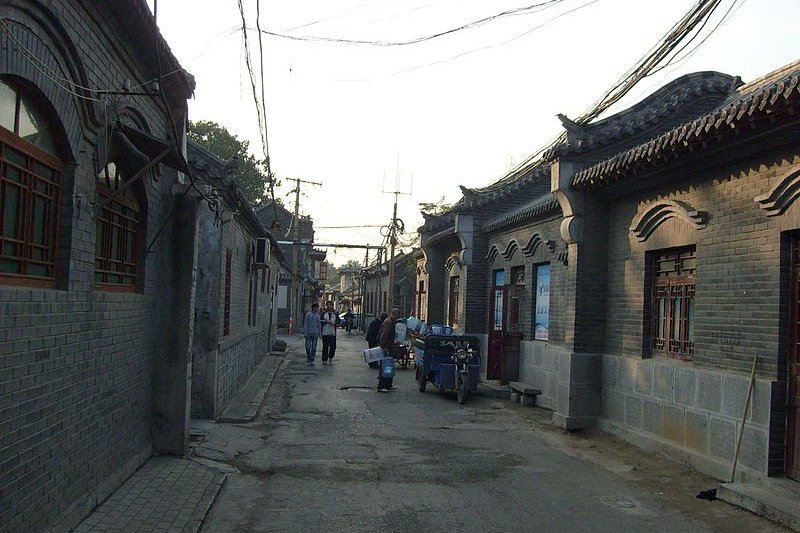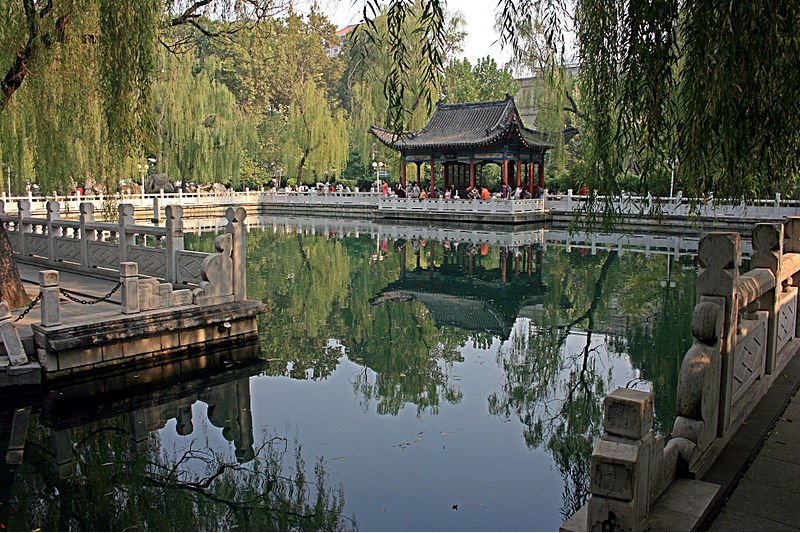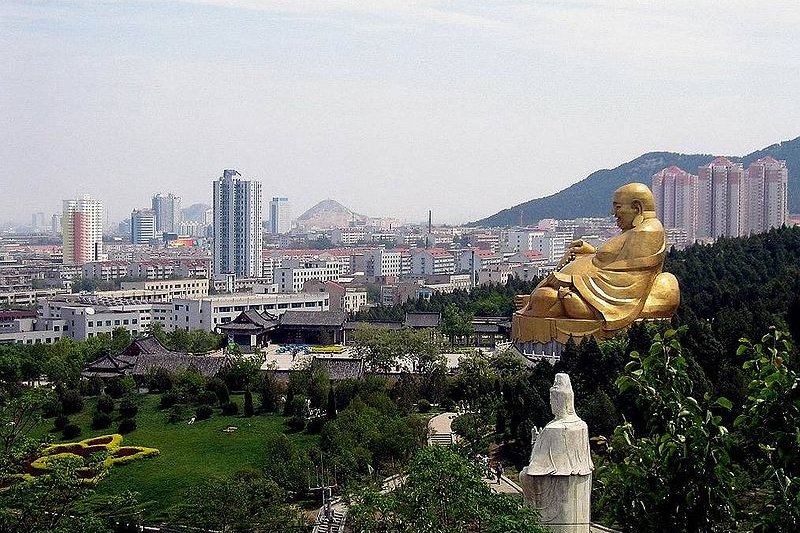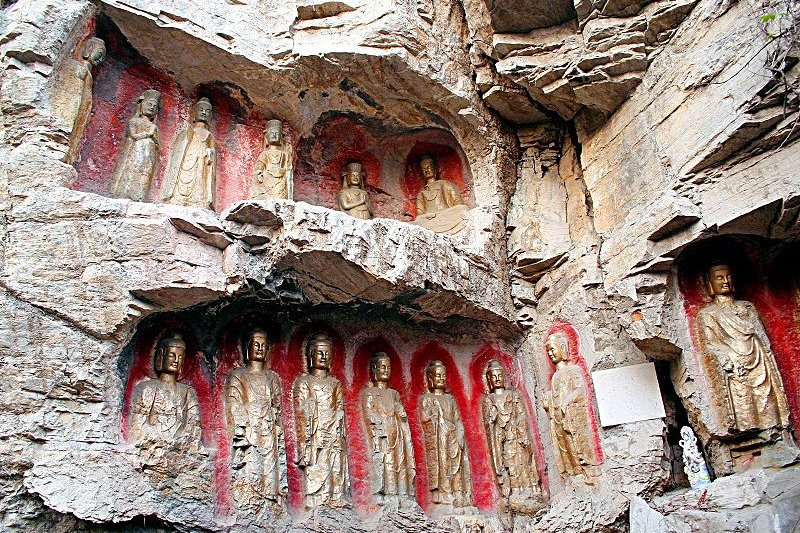 Jinan, Shandong Province
Jinan, Shandong ProvinceSource: https://commons.wikimedia.org/wiki/File:HouZaiMenJie.jpg
Author: Xiehechaotian

Jinan (济南) is the capital and second biggest city in Shandong Province, China. The city has a sub-provincial administrative status. It covers 8,177 sq km (3,157 sq mi) and has a population of 6 million people.
Jinan is located 400 km to the south of Beijing. It is bordered by Dezhou to the northwest, Binzhou to the northeast, Zibo to the east, Laiwu to the southeast, Tai'an to the south, Liaocheng to the southwest and Dezhou to the northwest. The city occupies the area between the Yello River to the north and the Taishan Mountains to the south.
 Pearl Spring Pool, Jinan
Pearl Spring Pool, Jinan
Author: Xiehechaotian

Jinan (济南) is the capital and second biggest city in Shandong Province, China. The city has a sub-provincial administrative status. It covers 8,177 sq km (3,157 sq mi) and has a population of 6 million people.
Jinan is located 400 km to the south of Beijing. It is bordered by Dezhou to the northwest, Binzhou to the northeast, Zibo to the east, Laiwu to the southeast, Tai'an to the south, Liaocheng to the southwest and Dezhou to the northwest. The city occupies the area between the Yello River to the north and the Taishan Mountains to the south.
 Pearl Spring Pool, Jinan
Pearl Spring Pool, JinanSource: https://commons.wikimedia.org/wiki/File:Pearl_spring_2008_09_15.jpg
Author: Rolfmueller

Jinan experiences a climate between humid subtropical and humid continental. Its warmest monts are June and July, when the average high temperature reaches 32°C. Coldest month is January, when the average low temperature drops to -4°C. July is the wettest month with 201 mm of precipitation.
Jinan, which means "south of the Ji River", was named after a river that has disappeared in 1852, when the Yellow River changed its course. The city was formerly written as Tsinan in the Wade-Giles romanization. Human habitation in the area goes back thousands of years, with evidence such as the Neolithic Longshan Culture discovered in 1928.
 View of Xi'an from Dayan Tower
View of Xi'an from Dayan Tower
Jinan was the capital of the Kingdom of Jibei during the Han Dynasty (206 BC-220 AD). Excavation of Han Dynasty tombs has yielded artifacts ranging from funerary masks to pillows and swords, all crafted from jade.
Today Jinan is a modern city. It played host to the 11th All China Games in 2009. The people of Jinan speak a Jinan dialect of Mandarin which is not easily understood by speakers of standard Mandarin. The city is a railroad hub and a market for agricultural products. It also has a number of industries including textile, steel and chemical.
 Qianfoshan Buddha statues, Jinan
Qianfoshan Buddha statues, Jinan
Author: Rolfmueller

Jinan experiences a climate between humid subtropical and humid continental. Its warmest monts are June and July, when the average high temperature reaches 32°C. Coldest month is January, when the average low temperature drops to -4°C. July is the wettest month with 201 mm of precipitation.
Jinan, which means "south of the Ji River", was named after a river that has disappeared in 1852, when the Yellow River changed its course. The city was formerly written as Tsinan in the Wade-Giles romanization. Human habitation in the area goes back thousands of years, with evidence such as the Neolithic Longshan Culture discovered in 1928.
 View of Xi'an from Dayan Tower
View of Xi'an from Dayan TowerSource: https://commons.wikimedia.org/wiki/File:Qianfoshanpark.jpg
Author: Qquchn

Author: Qquchn

Jinan was the capital of the Kingdom of Jibei during the Han Dynasty (206 BC-220 AD). Excavation of Han Dynasty tombs has yielded artifacts ranging from funerary masks to pillows and swords, all crafted from jade.
Today Jinan is a modern city. It played host to the 11th All China Games in 2009. The people of Jinan speak a Jinan dialect of Mandarin which is not easily understood by speakers of standard Mandarin. The city is a railroad hub and a market for agricultural products. It also has a number of industries including textile, steel and chemical.
 Qianfoshan Buddha statues, Jinan
Qianfoshan Buddha statues, JinanSource: https://commons.wikimedia.org/wiki/File:Qianfoshan_buddha_statues1.jpg
Author: Rolf Müller

Looking for information on Penang? Use this Map of Roads in Penang to zoom in on information about Penang, brought to you road by road.

Author: Rolf Müller

Planning your trip to Jinan
Jinan is a major transportation hub. There are high-speed trains connecting it with Beijing (3.5 hours) and Shanghai (5 hours). You can also fly to Jinan, and take a taxi from the airport to downtown. The journey from airport takes an hour and costs ¥100.Exploring Jinan
For a tourist, it may be more practical to take the taxi than to learn to take the bus, which are often overcrowded. The bus fare is ¥2 for an air-conditioned bus. Taxi fares start at ¥7.50. Have someone write your destination in Chinese to show to the taxi driver.Places of Interest in Jinan
- Baotu Springs
- Black Tiger Springs
- Five Dragon Pool
- Hero Mountain (Yingxiongshan)
- Red Leaves Valley (Hongyegu)
- Scientific and Technical Museum
- Shandong Provincial Museum
- Spring City Square (Qian Cheng Guang Chang)
- Thousand Buddha Hill (Qianfoshan)
 Latest updates on Penang Travel Tips
Latest updates on Penang Travel Tips
 Map of Roads in Penang
Map of Roads in Penang
Looking for information on Penang? Use this Map of Roads in Penang to zoom in on information about Penang, brought to you road by road.
Copyright © 2003-2025 Timothy Tye. All Rights Reserved.

 Go Back
Go Back